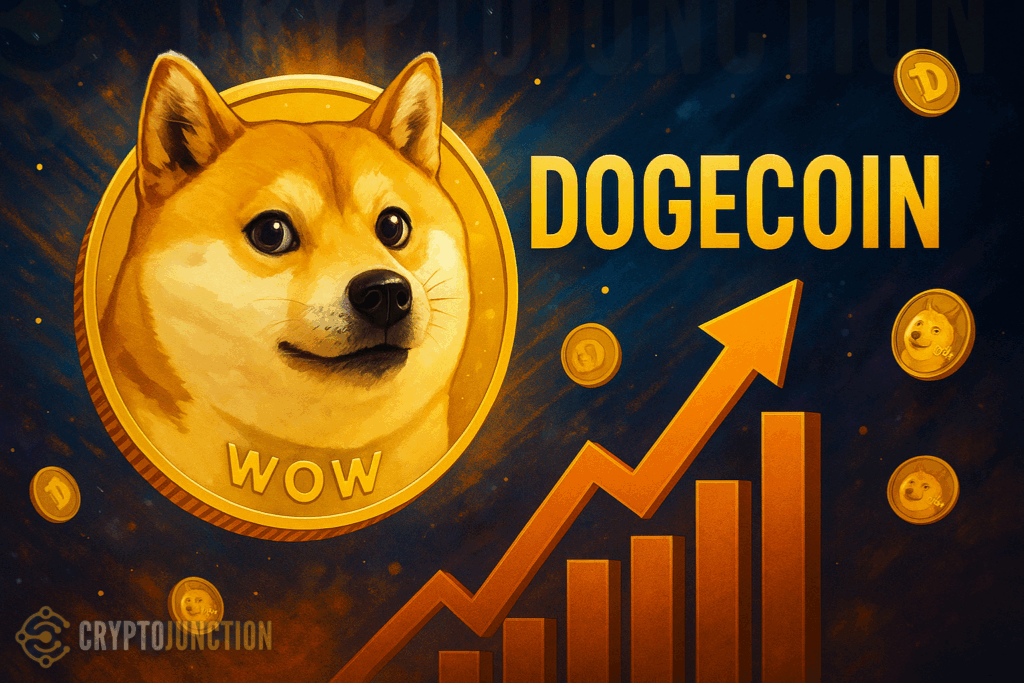When Dogecoin launched in December 2013, it was never meant to be serious. Created by
software engineers Billy Markus and Jackson Palmer, the coin borrowed its mascot from the
viral “Doge” meme — a Shiba Inu dog paired with quirky phrases like “such wow, much fun.”
At the time, many dismissed it as satire that would fade within weeks.
But a decade later, Dogecoin has become one of the most recognized names in crypto. At its
peak in 2021, it hit a market cap of more than $85 billion, surprising even seasoned
investors. What started as a playful parody has evolved into a cultural icon, a payment tool,
and a true entry point for millions of first-time crypto users.
So how did a meme coin manage to carve out a lasting place in digital finance?
What Makes Dogecoin Unique?
Dogecoin is a peer-to-peer digital currency that runs on its own blockchain. Like Bitcoin, it
uses a proof-of-work (PoW) system, but with faster block times and much lower transaction
fees. Unlike Bitcoin’s capped supply of 21 million coins, Dogecoin has no maximum limit —
around 10,000 new DOGE are mined every minute.
This inflationary model has its critics, yet it also makes Dogecoin attractive for everyday
transactions rather than hoarding. More importantly, DOGE’s real strength isn’t just its
technology — it’s the community spirit behind it.
The unofficial motto, “Do Only Good Everyday,” captures the coin’s identity: fun, generosity,
and inclusivity. That culture has turned Dogecoin from a joke into what many call “the
people’s crypto.”
The Power of Community and Culture
The real engine behind Dogecoin’s rise is its community. From the early days, users on
Reddit and Twitter (now X) rallied around DOGE, using it to tip creators, share memes, and
fund causes. This culture of generosity and humor created a sense of belonging that
traditional financial assets simply can’t match.
Some famous community-driven initiatives include:
Doge4Water (2014):Raised over $30,000 in DOGE to fund clean water wells in Kenya.
Jamaican Bobsled Team (2014): Helped send the team to the Winter Olympics in Sochi.
Online tipping: DOGE became one of the first digital currencies widely used for small online
payments and rewards.
In short, Dogecoin became the “people’s crypto,” not because of its code, but because of the
movement it inspired.
Elon Musk and the DOGE Effect
No story about Dogecoin is complete without Elon Musk. Starting in late 2020, Musk began
tweeting jokes and memes about DOGE, calling it “the people’s crypto.” His posts often
triggered massive price surges, sometimes within minutes.
→In February 2021, a tweet calling Dogecoin “the people’s crypto” pushed the price up by
nearly 40%.
→On April 15, 2021, Musk’s “Doge Barking at the Moon” tweet helped the coin double in value.
Even appearances on shows like Saturday Night Live moved the price dramatically.
While his influence has declined slightly in recent years, Musk’s early involvement cemented
Dogecoin’s reputation as the meme coin with real staying power.
Beyond the Meme: Real-World Uses of Dogecoin
Despite its playful origins, Dogecoin has found practical applications:
Online Tipping & Social Media – DOGE can be used to tip creators on Reddit, X (via bots
like @MyDOGEtip), and streaming platforms like Twitch.
Charity & Fundraising – Organizations like The Water Project and Every.org accept
Dogecoin for donations, proving its real-world impact.
Gig Economy Payments – Freelancers can receive DOGE payments through platforms like
NOWPayments.
IoT & Automation – Some pilot projects experiment with DOGE microtransactions for things
like smart shipping or decentralized energy grids.
Although many of these use cases remain niche, they show that DOGE isn’t just about
memes — it has functional value in peer-to-peer payments.
Dogecoin in DeFi and Institutions
One of the biggest shifts in Dogecoin’s journey is its entry into decentralized finance (DeFi).
Through wrapped DOGE (wDOGE) tokens, holders can now participate in Ethereum-based
protocols, using DOGE as collateral or for liquidity mining.
Institutional interest is also growing. In early 2025, Grayscale and Bitwise filed for Dogecoin
exchange-traded funds (ETFs), which, if approved, could open the door for mainstream
investors. Additionally, firms like BitOrigin have acquired tens of millions of DOGE for
treasury strategies, signaling confidence in its future.
Criticism and Challenges
Despite its success, Dogecoin faces several challenges:
Regulatory uncertainty – Meme coins often sit in a gray area, making governments cautious.
Unlimited supply – With no cap, DOGE is inflationary, which raises doubts about its
long-term value.
Dependence on hype – Much of Dogecoin’s price action is tied to culture and celebrity
influence, rather than fundamentals.
Skeptics argue that without strong technological differentiation, DOGE risks fading once the
hype cycle cools.
The Future of Dogecoin
So, where does Dogecoin go from here? Opinions differ. Optimists believe that broader
merchant adoption, DeFi integrations, and potential ETF approvals could push Dogecoin into
the mainstream. Some even predict DOGE could hit $1 if institutional support grows.
On the other hand, critics warn that volatility, speculation, and lack of innovation could hold it
back. The truth likely lies somewhere in between: Dogecoin will remain a cultural symbol
while slowly expanding its role in real-world payments and blockchain ecosystems.
Conclusion – A Joke That Changed Crypto Forever
Dogecoin began as a parody but ended up becoming a serious player in the crypto world. Its
rise proves that finance is not just about numbers — it’s also about community, culture, and
belief. Whether it’s tipping a creator, donating to charity, or sparking memes that reach
millions, DOGE represents something unique: the fun side of money.
Even if its price fluctuates, one thing is clear — Dogecoin has already secured its place in
crypto history.

